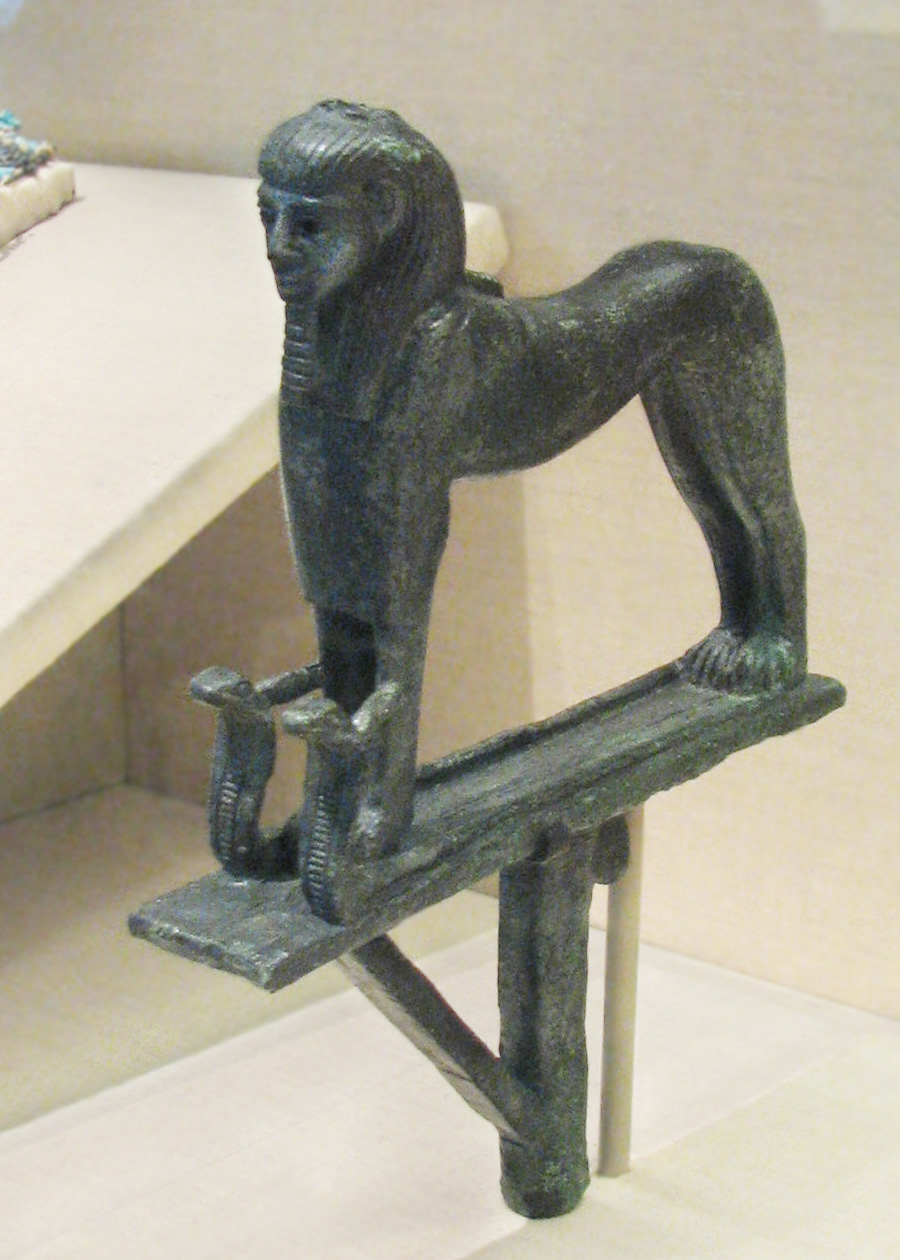
Third Intermediate Period, Dynasty 21/25, ca. 1070-664 BCE
Bronze, 22.2 x 16.5 x 3.6 cm (8 1/2 x 6 1/2 x 1 1/4 in.)
Gift of Henry H. Getty, Charles L. Hutchinson, and Robert H. Fleming,
Art Institute of Chicao #1894.257
Photo © Joan Ann Lansberry
|
(From _The Complete Gods and Goddesses of Ancient Egypt_, by Richard Wilkinson, page 183) Tutu "A somewhat obscure apotropaic god venerated mainly in the Graeco-Roman Period, Tutu was called 'he who keeps enemies at a distance' and was believed to provide protection from hostile manifestations of deities and demons. The god was said to be the son of Neith, and was depicted in the form of a walking lion or as a composite deity with human head, the body of a lion, the wings of a bird and a tail which was a snake."
(From The Egyptian god Tutu: a study of the sphinx-god and master of demons with a corpus of monuments_, by Olaf E. Kaper) |


